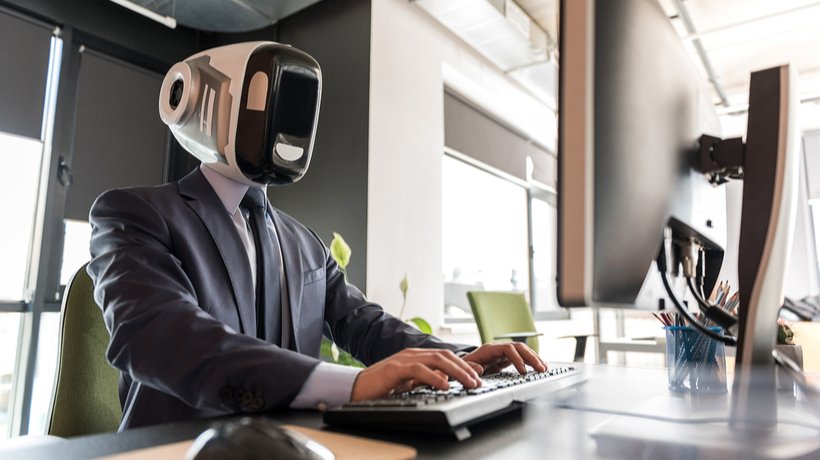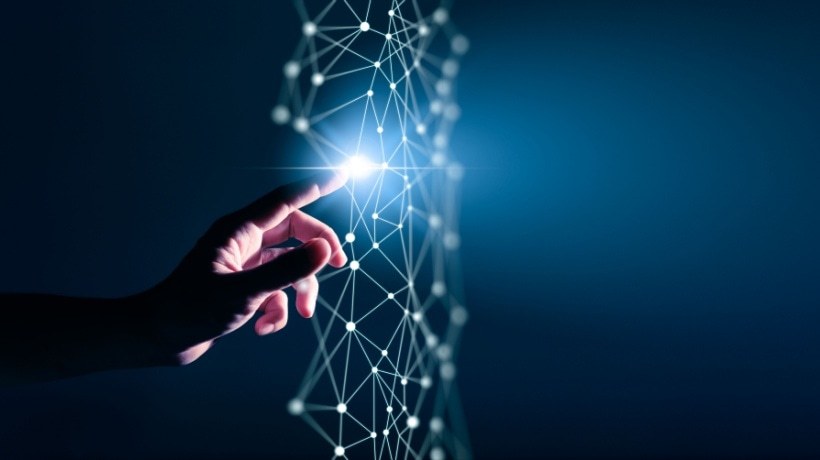How Is Digital Transformation Affecting L&D? Discussing Artificial Intelligence
Bradbury taps into a human concern that surrounds the idea of Artificial Intelligence – if technology continues to develop at such a rate, humans will begin to become obsolete in our own homes and workplaces. Every week there’s a new article telling us that robots can do our jobs better than we can, after all.
But step back from the hysteria—the robots are not really coming to get us—and AI is already very much a part of our lives. Computers have been mimicking cognitive functions for many years: Deep Blue beat Kasparov in a chess match in 1996. We’ve all been helped (or hindered) by a chatbot online. Chatting with Siri is an everyday occurrence.
And the future is bright for learning. The award-winning online training platform Filtered uses AI to personalize the learning experience for each user. Its global filter also incorporates a chatbot to provide rapid-fire content suggestions based on your profile. Half push, half pull – the learner chooses when, where, and how much they want to learn, and the content is pushed depending on the information they provide.
So – we have our Big Data, our intelligent systems, many devices, and a plethora of content in different formats. Our learners can get going at their own pace and be guided by AI-fueled platforms. And we can tailor the content we feed in based on the intel we get back. The future is writing itself.
Industrial Revolution: Fourth Time Lucky?
We're in the fourth industrial revolution. The first was powered by steam, the second by electricity. The third was made possible by the microchip. Now we're at a point where Big Data, communications, and automation promises to change the way we work and live in whole new ways, alongside other developments in manufacturing, transport, and medicine. Just like the other revolutions, people will need to adapt and live with this leap in technology. This time, the technology will also learn to adapt and live with us. Let's take some informed guesses on where this might take workplace performance in years to come.
The fourth industrial revolution (4IR, if you're fond of acronyms) has automation and connectivity at its core. The ability for machines to network, make decisions, and intelligently distribute information allows us to automate not just manual tasks but also advanced problem solving and creativity. When we think of automation replacing jobs, people imagine self-driving cars and robots. However, better, cleverer software systems will make just as much of an impact, with many quietly doing their thing behind the scenes.
There are two ironies to this. So much, like modern learning content, is on demand – push, not pull. But intelligent software will pull information on our habits and those of people attempting the same task. It will have the ability to suggest resources to us before we even know we need it. Virtual personal assistants like Apple's Siri and Microsoft's Cortana are mainstream applications. In the future, friendly chatbots will play a bigger part in our lives, acting as the interface to a slew of systems that save our time and effort. Coaches and buddies may be digital, following us from school and managing our life-long development.
This brings the second irony. As automation displaces certain roles in the workplace, it will also help to retrain us. But certain skills will begin to disappear. The driverless car removes the necessity of learning to drive. In this sense, technology will learn so we don't have to. Augmented Reality will walk us through tasks. Imagine putting on a headset that projects instructions, hints, and tips into your field of view. Memorizing things like policies will neither be needed nor desirable. This technology is here today and as hardware becomes smaller and more discrete, it will become more and more integrated into the workplace.
But this doesn't mean the end for human interaction. Not only will jobs remain that require people, but the same technology that networks the new wave of intelligent software will also network us in new ways. Augmented Reality and Virtual Reality will allow us to share digital worlds and see through the eyes of other people, bringing us closer together. We can share experiences and insights in a way we never could before. Cohorts of learners will be able to collaborate and share easily over distance, making social learning over distance feel much more like the classroom, even if the experience looks a lot different.
It's the shift from content on-screen to content all around us, intelligently filtered and instantly there at the point of need, that will provide a big change for learners, as will the way we're connected. Interfaces, be they onscreen or via wearable, will perhaps drive these new ways of learning. No one can be sure exactly where the fourth industrial revolution will take learning, but one thing's for sure: we'll need good content. However it pans out, the next decade will be an exciting time for L&D professionals.
Final Word
So where does this leave us? As many have blogged, workplace learning needs a new definition and a new mindset. Learning happens as a natural part of work, people are learning more by themselves using online resources as they’d do in everyday life. The new role for L&D involves encouraging, enabling, and supporting self-organized learning.
The changing pattern in the workplace must be recognized and embraced; there is a fundamental shift in power and it belongs to the learner. We must recognize this and shift our approach to embrace digital design principles to transform the L&D offer.
We are heading towards a more agile L&D, one that embraces digital and social learning, focuses on and empathizes with end users, delivers a personalized learning offer, facilitates and supports learning communities on and offline, is more outcome focused and understands how to support performance.
A learning ecosystem that makes the most of digital transformation – elegantly using a stack of technology to facilitate learning.
Sounds like a tough challenge? In some ways it should; the word ‘transformation’ does suggest a step change. But like digital transformation in any aspect of life—mobile phones instead of phone boxes, on demand instead of scheduled TV—we won’t realize we’ve changed until it’s well embedded and has become second nature.
If you want to learn more about the digital future of Learning and Development, download the free eBook Time To Transform: How Is Digital Transformation Affecting L&D?.
Related Articles:
- How Data Transforms Learning And Development, Part 1: xAPI
- How Data Transforms Learning And Development, Part 2: Google Analytics
- 6 Ways To Create Pull Learning Content
- Free eBook: Time To Transform – How Is Digital Transformation Affecting L&D?









